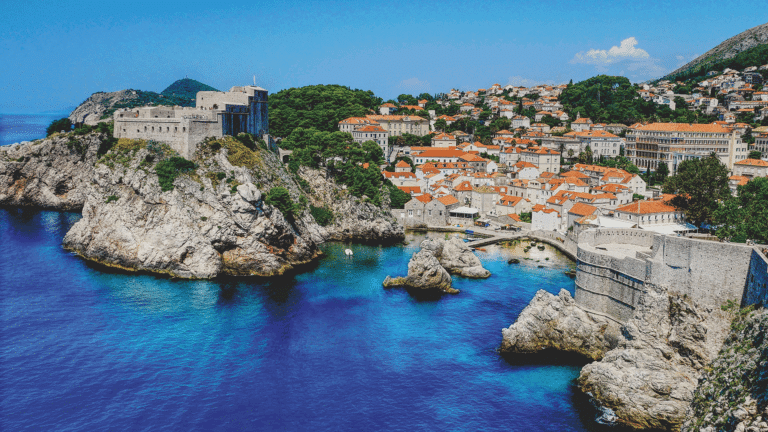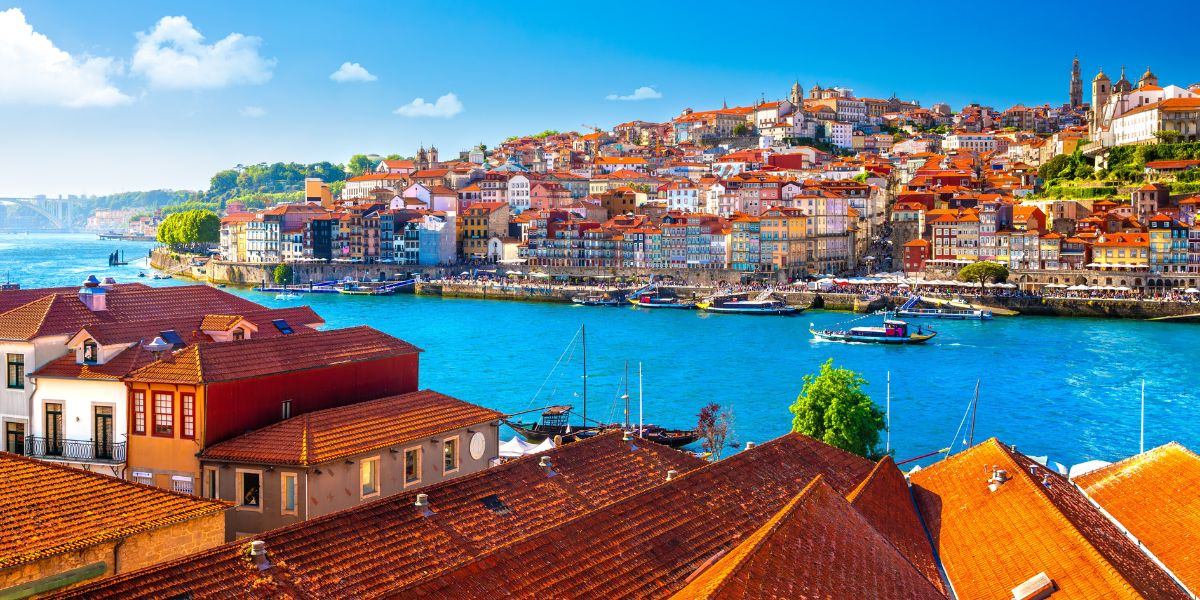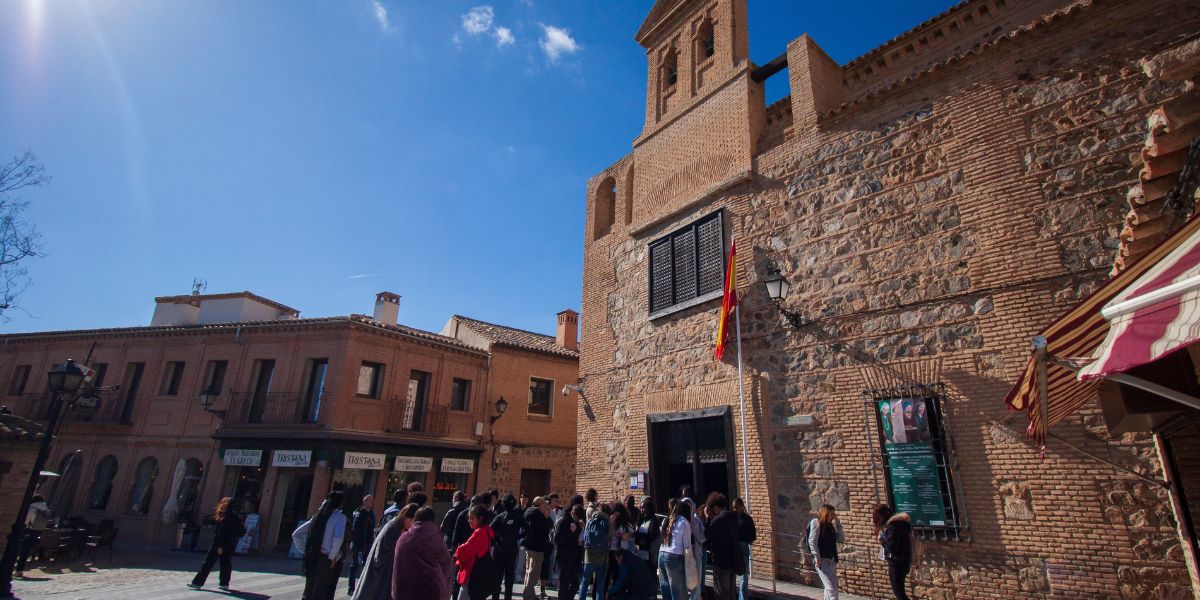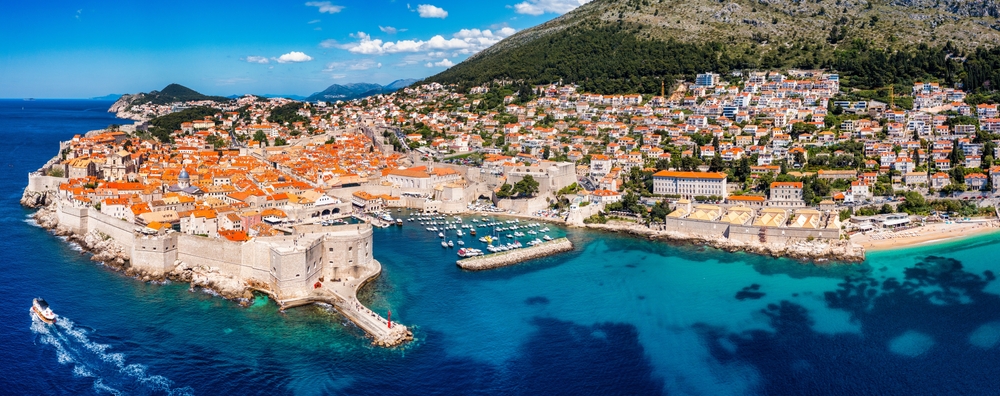While today’s Jewish communities in Spain are small, there is a grand legacy of culture, architecture, literature, Talmudic study, and enlightenment that can be seen and felt if one looks carefully and is guided through a tour exploring this heritage during a Sephardi heritage tour in Spain. Step back in time and walk in the footsteps of these ancient communities by exploring centuries-old Jewish quarters, synagogues, mikvehs, monuments, museums, and hidden gems that will tell the stories of the country’s buried Jewish past!
Significant Sephardi Sites!
With hundreds of years worth of rich Jewish culture and traditions, Spain offers visitors a plethora of historical Jewish sites across the country’s major cities.
Barcelona
- The heart of Barcelona’s Jewish community is the “El Call” – a term that refers to the quarter where the city’s Jews lived between the 7th and 14th centuries. It is located in the Gothic Quarter, which consists of the city’s oldest parts, remains of a Roman wall and other medieval landmarks. An interesting fact about the architecture in the Gothic Quarter is that despite its name, many of the buildings were rebuilt, modified, and even newly built in the neo-Gothic style during a beautification project the city undertook in the late 19th century and 20th century.
- Known locally as Sinagoga Major de Barcelona, the Ancient Synagogue of Barcelona dates back to the 3rd century and was used by Barcelona’s Jewish community until their expulsion in 1492. It is the oldest Jewish house of worship in Spain and one of the oldest synagogues left in Europe. In 1987, it was rediscovered in a basement and restored to its former glory. It is now open to the public to explore and discover the rich history behind the spiritual center of Barcelona’s Jews.
Madrid
Unlike the other cities on this list, Madrid has very few traces of Jewish life before 1492, when the Jews were expelled from Spain. Today, one can explore the history of Barcelona’s Jews through museums and exhibitions and learn about the past through Madrid’s modern Jewish community. Travel on a Sephardi heritage tour in Spain, and your local tour guide will point out where the former Jewish Quarter was located, near the present-day Teatro Real Opera house in Lavapiés, and where Madrid’s oldest synagogue once stood.
- The Monument to the Victims of the Holocaust was created by Israeli-Sephardi sculptor Samuel Nahon Bengio and is dedicated to Spanish victims of the Holocaust. It is located in the Three Cultures Garden in Juan Carlos I Park. The monument was inaugurated in 2007, making it the first Holocaust memorial erected in Spain.
- Another contemporary site you’ll want to visit is the Beth Yaacov Synagogue (Sinagoga Beth Yaacov), which opened to the public in 1968. This building became the first Jewish house of worship built in Spain since the expulsion of Jews from Spain in the 15th century.
What makes this synagogue even more remarkable is that it was opened on the same day the Spanish Ministry of Justice officially repealed the Alhambra Decree of 1492, which expelled practicing Jews from Spain. Jews in Spain could now hold religious services without receiving permission from the Spanish government.
Visiting a synagogue is a great way to observe the local traditions and customs and gain insight into how today’s Jewish community lives and interprets their country’s tragic past.
Seville
Barrio Santa Cruz is Seville’s former Jewish Quarter, once home to the second-largest community in the Iberian Peninsula after Toledo. Catch a glimpse of how the Jews of Seville once lived by exploring the quarter’s picturesque alleyways, whitewashed facades, and plazas. While all four of the city’s synagogues were converted into churches in the aftermath of the Spanish Inquisition, one can still find traces of the city’s Jewish population with the help of a knowledgeable tour guide who can point out the hints of Jewish life in the most unexpected places, such as hidden Hebrew inscriptions in a cathedral!
Toledo
El Tránsito Synagogue is another stunning piece of Spanish Jewish history in Toledo’s old Jewish Quarter, dating back to 1357. The expulsion of Jews in 1492 led to the house of worship changing hands over the centuries, including being repurposed into a hospital, a church, and military barracks.
The synagogue features spectacular Islamic and Christian-influenced architecture and decor, such as Nasrid-style stucco, multi-foil arches, and a Mudéjar ceiling. Today, the building functions as a museum dedicated to preserving Spain’s Sephardi heritage, offering visitors a vast collection of artifacts from Mesopotamia, antique coins, tombstones, Jewish marriage contracts, liturgical utensils, maps, archaeological findings, and more.
Granada
Once called Garnata al-Yahud, or Granada of the Jews, this community thrived and prospered under Muslim rule for hundreds of years, assisting in advancing science, literature, and culture.
- While most evidence of Granada’s Jewish community was erased with their expulsion in 1492, a nod to the ancient community was erected in 1988 in the form of a statue of Yehuda Ibn Tibon– one of Granada’s most renowned Jews. Named the Father of Translation, Tibon was recognized as a physician, philosopher, poet, and, most importantly, translator whose translations of Arabic texts made it possible for many scientific advances to reach Europe. The statue was donated to the city of Granada by one of his descendants, Gutierre Ibn Tibón
- Learn more about the city’s ancient Jewish community at the Sephardic Museum. This small museum, located in a private home, aims to show visitors the day-to-day life of Sephardic Jews and their contributions to literature, science, and the history of this community, which dates back to the year 303!
Córdoba
Dive into the spiritual center of Cordoba’s Jewish community by visiting the Córdoba Synagogue – the only preserved synagogue in the Andalusian area of Spain after the expulsion of the Jews in 1492. The building was completed in 1315 and consists of a front hall, courtyard, prayer hall, and a women’s section. Visitors can appreciate the building’s stunning Moorish architecture, geometric and floral patterns, and carved Hebrew inscriptions that wrap around the interior.
Girona
Along with being the birthplace of Kabbalah and Jewish mysticism, Girona is well known for having one of the most well-preserved Jewish quarters in all of Europe. Girona’s Jewish Quarter, known as “El Call,” is home to stunning medieval architecture, many of which bear hints of the quarter’s fascinating Jewish past, such as the excavated home of legendary physician, Kabbalist, philosopher, and biblical commentator Nahmanides, and an indentation in a doorway that held a mezuzah!
- While wandering through the Jewish quarter, you may also stumble across the Bonastruc ça Porta Centre – a building complex that once housed a synagogue, mikveh, and other communal areas used by Girona’s Jewish community. One of the buildings in the complex now functions as a Jewish museum dedicated to preserving Catalonia and Girona’s Jewish heritage through eleven engaging exhibits!
Sephardi History in Spain
The history of Spanish Jews is truly remarkable. For 15 centuries, Spain was home to a Jewish community that influenced Spain’s history, culture, art, and customs for centuries. The name Sephardi itself, meaning ‘’Spanish’’ or ‘’Hispanic’’ in Hebrew, is derived from Sepharad (ספרד), a Biblical location, identified as Hispania, or the Iberian Peninsula.
Prior to 1492, Jewish communities thrived in many Spanish and Portuguese provinces. Jews, as a minority, constituted the population of cities like Lisbon, Toledo, Seville, Córdoba, Granada, and Málaga. However, in several other, smaller towns, such as Ocaña, Hervás, Buitrago del Lozoya, Ribadavia, Guadalajara, Lucena, Llerena, and Almazán, Jewish communities formed the majority as these towns were largely founded by Jews.
Early History of Jews in Spain until the 1300s
It is said that the first Jews came to Spain in 70 CE, after the destruction of the Temple in Jerusalem. They settled on the Mediterranean coast and then spread throughout the Iberian Peninsula. These ancient Israelites were the ancestors of today’s Sephardic Jews, who make up roughly 16% of the world’s Jewish population. The evidence of the early presence of Jews in Spain is a trilingual inscription (in Hebrew, Greek, and Latin) on a child’s sarcophagus in Tarragona, which dates back to the Roman Empire. Today, this ancient sarcophagus is displayed can be seen at the Sephardic Museum in Toledo.
During the Roman Empire, the Jews were treated the same way as similarly to other communities. However, after King Recaredo converted to Christianity in 586, Spanish Jews endured persecutions and forced conversions for nearly a century.
When Arabs arrived in 711, Jewish people cooperated, and both communities got along well.
The Muslim conquest of Spain began in 711, marking a new era for the Jewish people living in the Iberian Peninsula, who coexisted in peace and prospered under their conquerors for centuries.
The Arabic poetry inspired Jews to study and write grand poems, which enabled the growth of the Hebrew Jewish culture. In the 12th century, Jews were a majority in Granada. The golden age for the Jewish communities had begun, and Toledo became not only the Jewish capital but also home to chief rabbis, Talmudists, scholars, and financiers.
Today, the city of Toledo offers some of the most significant and well-preserved remnants of Sephardi history in Spain, including its Jewish quarter, the Samuel Halevi Abulafia Synagogue (later converted into the La Sinagoga del Tránsito Church), the Sephardic Museum, and the Santa Maria La Blanca Church.
The Golden Age for Jewish culture in Spain came to an end in 1146 when the Almohads of Morocco invaded Spain and prohibited the practice of Judaism. Some Jews converted, others practiced their religion secretly, while the rest fled to the neighboring countries.
In the centuries that followed, the Christian efforts to reclaim Spain from Muslims affected Jews as well. After winning back the lost territories, the old Jewish communities, protected by the Christian monarchs, prospered in Aragón and Catalonia, while others settled in, as did Santiago de Compostela. As the power of the church grew, anti-Jewish measures were issued, meaning the freedom of Jews was limited, and they were excluded from public services.
The Turning Point: 1300-1492
The anti-Jewish campaign launched in 1378 culminated in the destruction of the Seville’s judería, and later in Andalusia and Castile. From July 1391, the pogrom of Jews continued, and the Jewish communities in Barcelona, Majorca, Valencia, and Girona were wiped out. To survive, many Jews converted to Christianity and were called ‘conversos.’ Others continued to practice Judaism in secret (the crypto-Jews or Marranos). The monarchs further decided to separate conversos and Jews to prevent conversos from returning to Judaism.
The Alhambra Decree
After conquering Granada on March 32, 1492, Isabella of Castile and Fernando of Aragón signed the edict of expulsion (Alhambra Decree) with the aim of eliminating Jewish influence in Spain. This decree forced many Jews into exile.
After 1492
With only a few possessions that were not in silver and gold, Spanish Jews were exiled from Spain to Portugal, North Africa, the Ottoman Empire, and other countries in Europe, mainly the Netherlands, France, England, and Italy. However, these communities retained their language, Castilian and Catalan, as well as their customs. By the 17th century, there were no Jews in Spain.
- 18th century- Some thinkers argued about the importance of Jewish communities for the to Spanish heritage. However, the few attempts to cancel the expulsion decree and allow the return of Jews failed.
- 19th century- Jewish merchants started visiting Spain for textile trade, establishing small Jewish communities that were officially recognized in the 20th century. In 1913, Professor Abraham Shalom Yehuda was invited to teach Hebrew at the University in Madrid. In 1914, Barcelona opened a synagogue, and Madrid followed in 1917.
- Post World War I- Efforts for Jewish recognition intensified, and on December 24th, 1924, the Spanish government issued a decree granting Sephardim Spanish nationality on certain conditions.
- World War II – Due to the revival of anti-Semitic propaganda, synagogues and Jewish cemeteries in Madrid and Barcelona were closed, and circumcisions and marriages were prohibited due to the revival of anti-Semitic propaganda. As a neutral state in the war, Spain was an exit point for many European Jews who were kept there in camps until their deportation to the USA.
- Post WWII– Despite Spain being a Catholic country, Jewish communities began to form again, opening synagogues and centers for studying Spanish Judaism. From 1978, Spain’s constitution from 1978 guaranteed all citizens religious freedom, Today, one can find Jewish communities in Barcelona, Madrid, Valencia, Malaga, and Seville, as well as in Melilla and Ceuta, the Moroccan enclaves.
The Sephardic Legacy in Spain
The expulsion of Jews in 1492 and their exile marked the end of an era and the beginning of another in the history of Sephardi Jews. Hundreds of years of exile didn’t extinguish their identity as Sephardic Jews, nor did it diminish their accomplishments on the Iberian Peninsula.
Their presence left incredible marks on the region’s culture, language, customs, and architecture. The beautiful Sephardic synagogues, whether built before or after the expulsion decree, retained Islamic influence in their architecture and they favored calligraphic, geometric, and floral decorative motifs. Some of them remained synagogues, while others were turned into museums to preserve and cherish the history of Sephardi communities.
Unfortunately, many of the old synagogues were converted into various other buildings, such as churches. One of the most famous examples is the Santa Maria La Blanca Church in Toledo.
The destruction of major Jewish heritage sites in the country makes organized heritage tours an excellent choice and almost a must for those looking to delve into Sephardi history in Spain.
To this day, many quarters, in cities across Spain, tell the story of the country’s Jewish communities and their magnificent traditions. There is no experience more immersive and surreal than exploring one’s heritage through the places where their ancestors lived, worked, socialized, and practiced their faith. During a Spanish Jewish history tour, one can discover several ancient Jewish quarters across Spain, including those in Córdoba, Seville, Toledo, Girona, and Barcelona, where Jewish communities once flourished and prospered with their Christian and Muslim neighbors for hundreds of years!











